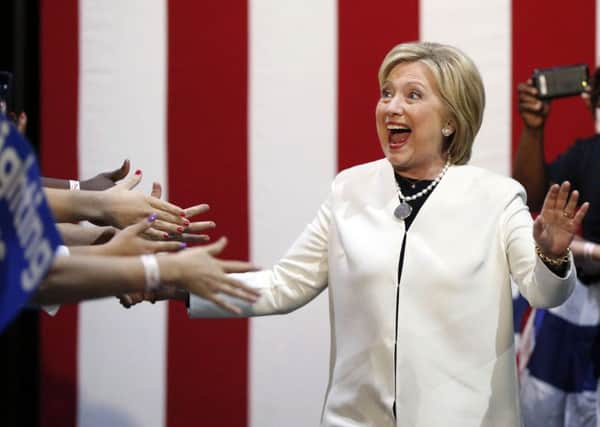Ted Bromund: Where's the leadership in American election?


The pattern, simply, is this: if you’re an American political party and you win two elections, you’re a coin flip away from winning a third. But if you win that third, you don’t win a fourth.
Thus, Harry Truman had nearly two full terms. But the Democratic nominee in 1952, Adlai Stevenson, couldn’t win the third by beating Dwight Eisenhower. After Ike’s terms, Richard Nixon fell just short of a third by losing to John F. Kennedy.
Advertisement
Hide AdAdvertisement
Hide AdAfter JFK’s murder, Lyndon Johnson completed his term and won a second, but Hubert Humphrey couldn’t make it three: he lost a close contest to Nixon in 1968. Even after Watergate, Gerald Ford almost secured that third term for the Republicans in 1976.
Ronald Reagan’s two terms, ending in 1988, were followed by one (and done) for George H.W. Bush. Next came Bill Clinton, whose successor Al Gore won the popular vote (but lost in the Electoral College) against George W. Bush. Again, that third term fell just out of reach.
The only break in the pattern came under Jimmy Carter, who won in 1976 but lost convincingly in 1980. The lesson to draw from this may be simple: Carter was a terrible president.
But the pattern is clear. And it implies that, no matter who the nominees are this year, the Democrats have always had at least an even chance of victory, a chance improved by the structural edge the Democrats hold in populous states like New York and Virginia.
Advertisement
Hide AdAdvertisement
Hide AdOf course, the pattern also implies that, if the Democrat wins, 2020 is likely to be good for the Republicans. The incumbent Democrat will then be playing the role of George H.W. Bush, who followed a dominant president and was tripped up by his own willingness to raise taxes.
But on the other hand, this post-war pattern is new. Before the Civil War, the Democrats dominated. After it, the Republicans ruled until the Great Depression. In the long run of US history, the regular post-war twos and threes are the exception, not the rule.
So why was this pattern born after 1945?
It was a result of America’s internal security and superpower status. Before the Civil War, thanks to Britain’s financial power (reflected through Wall Street), and of course slavery, the US didn’t feel secure in the world – or at home.
The Democratic Party won because it stood up more assertively to the money power, and was stronger in the South (and therefore conciliated the slaveholders). Democratic dominance reflected the inability of the US to determine the terms of its national existence.
Advertisement
Hide AdAdvertisement
Hide AdSince 1945, on the other hand, the US has been secure in itself. It’s been the verb, not the object, in the grammar of international affairs.
That doesn’t mean the US had everything its own way. The Cold War was a struggle.
So what does this tell us about 2016?
Well, if this is still the post-war era, it tells us that Hillary Clinton, the presumptive Democratic nominee, is likely to win this time and lose in 2020. But if that era was indeed defined by America’s superpower status, the lesson for 2016 is less clear.
On an objective level, the US is still the world’s only superpower. But many Americans don’t seem to believe this. How, they ask, can the US be the verb with China on the rise and Islamist terrorists running amok? In this way, President Barack Obama’s ‘leading from behind’ contributes to the unravelling of the post-war pattern.
Advertisement
Hide AdAdvertisement
Hide AdAnd, just as before the Civil War, Americans are concerned about the power of money, at home and abroad. The major political movements of the past seven years – the Tea Party and Occupy Wall Street – were driven by anger at corruption among the financial elite. Both parties failed to address that anger; both may pay the price.
In short, the US may be moving into a new era, one defined (as before 1861) by concern that it cannot control the terms of its existence. It might decide to end the post-war pattern by sticking with the party that provides the most persuasive reassurance against its insecurity.
I have no idea which party this will be. But I do believe that, because it facilitates one party rule, insecurity is an unattractive basis –perhaps even an unsafe one – for democratic politics.
And while I don’t miss the Cold War, I do miss American leadership, and what it did abroad. And right now, even more, I miss the way it shaped our politics at home.
Ted R. Bromund is a senior research fellow in Anglo-American Relations, based at The Margaret Thatcher Center for Freedom at The Heritage Foundation in Washington.